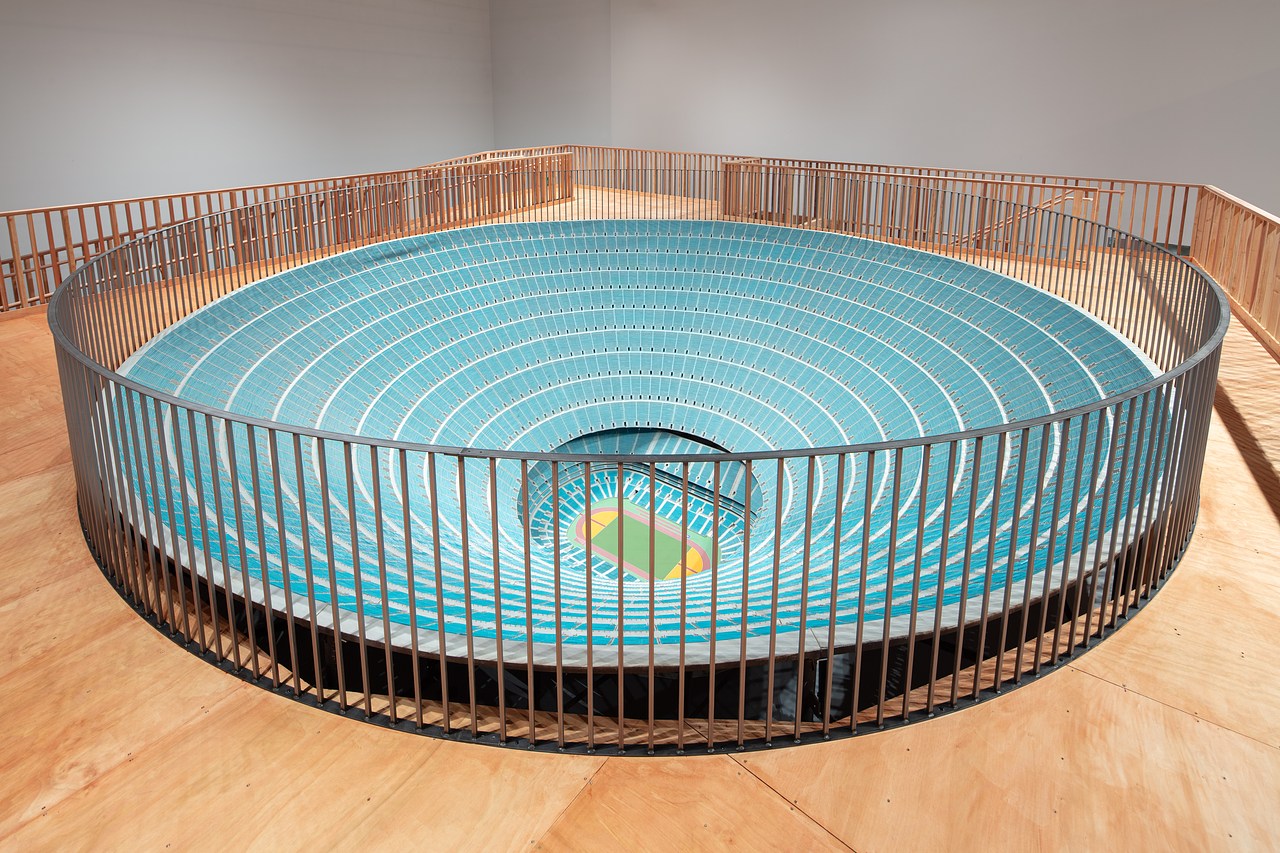
© » KADIST
John Wood & Paul Harrison
Board has a deadpan quality worthy of Buster Keaton. With this work, Wood and Harrison create an intimate, formally structured mise-en-scène in which they use their own bodies in interaction with a wooden board. The artists elaborate an orchestration of the comic consequences of inertia, gravity, and the law of falling bodies in this low-tech physics experiment.

© » KADIST
John Wood and Paul Harrison
One of John Wood and Paul Harrison’s earliest works, Device features Harrison performing a series of actions, assisted by the titular ‘devices’, that use physics to force his body into unusual and uncomfortable positions. Maintaining his signature deadpan expression throughout the video, in one scene Harrison is thrusted into the air by a slowly inflating balloon until only his feet are visible in the frame, while in another he levitates in diving position with the help of a pulley system. Wood uses his body and specially-designed props created by the artist duo to explore the space of the screen in hilarious, and sometimes clumsy or violent, ways.

© » KADIST
John Wood and Paul Harrison
3-Legged is an early video work by John Wood and Paul Harrison in which they appear with their legs tied together (as one would do in a three-legged race). Wood and Harrison stand together in a narrow alcove built into their studio, dressed similarly in grey long sleeve shirts and jeans. Facing a tennis ball machine that is almost completely out of view, with only the barrel of the machine protruding from the bottom of the frame, they hobble back and forth across the alcove attempting to avoid the tennis balls launching toward them, with varying degrees of success.

© » KADIST
Matthew Angelo Harrison
In Bodily Study of Unthinking Groups, Harrison combines two disparate materials into one stratified stack: automotive clay (used in detailing cars) forms the earthy base, while fragments of zebra skull become imbedded in this falsified soil. Harrison’s forged archeological artifact compresses two cultural contexts together: that of Africa, represented by the bleached zebra skull; and that of Detroit, the birthplace of the American car. Detroit’s Matthew Angelo Harrison works at the intersection of sculpture and technology, building his own 3D printers (which rise to the status of sculpture), and using these creations to formulate others.

© » KADIST
Matthew Angelo Harrison
In Hole #1 a zebra scull stands in as a representation of Africa, while the plexiglass box and the hole made through it represent the inaccessibility of that culture to African-Americans.

© » KADIST
John Isaacs
A child and dreamer my whole life long (broken tree) (2004) is a sculpture made of filler, wire, copper, oil paint, and wood depicting a tree just at it’s moment of breaking into half – one part alive with foliage and blooming branches and the other the crisp of the break exposed, with the trunk adhered solidly to a plinth. The sculpture appears to speak quite bluntly about Isaac’s own sense of bleak pessimism when exposing a severed tree, the universe’s sacred sign of life and birth. Through the perfect rendering of this encapsulated moment, Isaacs demonstrates the strength of the sculptural artifact and his interest in failure and fragility.

© » KADIST
Paul Kos
Parked on the shoulder of a single lane highway running through a desert landscape, Marlene looks over her shoulder from inside the car at a fierce storm looming over a distant horizon. Turning her head toward and away from the scene she says, “When I look for the lightning it never strikes, but when I look away it does.” And indeed, the lightning does seem to strike only when she turns away. Before filming Lightning , Paul Kos had done a fair amount of research on lightning, much of it conducted at the lightning research lab at the University of Colorado.

© » KADIST
Paul Kos
Sound of Ice Melting is based on the ancient Zen Buddhist koan about the sound of one hand clapping. Here, Kos has surrounded two twenty-five-pound blocks of ice with eight microphones that call to mind the political press conferences prevalent during the Vietnam War era when this piece was created. Zen practice values such absurdity as a way to transcend the limitations of ordinary discourse and rational thought—empirical processes at the root of all political conflicts.

© » KADIST
Paul McCarthy
Drawing & Print (Drawing & Print)
To make Mickey Mouse (2010), Paul McCarthy altered a found photograph—not of the iconic cartoon, but of a man costumed as Mickey. On his shoulders he supports an enormous false head, Mickey’s familiar face grinning with glossy eyes. The artist has marked out in heavy black the background of Cinderella’s castle.

© » KADIST
Paul Czerlitzki
In this painting made in 2014, which is part of a series started in 2013, the artist dismantles the traditional painting process. Putting aside any formal intervention, the artist lets the membrane slowly soak up white monochrome paint through a transferring technique before removing it. In some places the structure of the canvas can be seen, while other places of the canvas are purposely blurred to evoke the texture of the material used.

© » KADIST
John Baldessari
Arms & Legs (Specif. Elbows & Knees), etc. : Arm (with Bottle) belongs to Baldessari’s most recent series of paintings in which the artist brings together photographic, painted, and three-dimensional elements, to juxtapose unlikely body fragments such as noses and ears, elbows and knees, or eyebrows and foreheads.

© » KADIST
John Baldessari
Drawing & Print (Drawing & Print)
The voids in Baldessari’s painted photographs are simultaneously positive and negative spaces, both additive and subtractive. In Person with Pillow: Desire, Lust, Fate , a woman’s facial expression is obscured by such void, leaving only her posture to suggest her emotional state. The two images stacked above the woman can be read as comic-style thought bubbles, intimating that she has lust, desire, and fate on her mind.

© » KADIST
John Morris
Drawing & Print (Drawing & Print)
Untitled was part of the 2002 exhibition “Drawings for the Austrian School” held at the D’Amelio Terras gallery in New York. For this occasion, Morris created a language of his own by using acrylic, ink, graphite and ballpoint pen on paper. The exhibition title comes from Morris’ interest in the early 20th century Austrian economist Joseph Schumpeter, a one time Austrian Minister of Finance, bank director, and economics professor who taught in Europe and at Harvard University.

© » KADIST
Paul Kos
Taking its title from the eponymous mythological creature—famously featured as sea nymphs in Homer’s Odyssey. Sirens exist in literature across many cultures including Ancient Greece and India, described as part bird and part woman, or like a mermaid. They were said to charm men by their song, and, having first lulled them to sleep, tear them to pieces.

© » KADIST
John Houck
John Houck’s multi-layered photographic compositions immortalize nostalgic objects from the artist’s childhood, manipulated in the studio and in post-production into unreal still-life arrangements. Stamp -X, Stamp -Y consists of a careful collage of uneven scraps of paper. On their versos, these fragments of blue, white, and manila papers hold the artist’s childhood stamp collection; turned as they are, these shards of envelope become planes of colors that Houck manipulates in a vaguely grid-like fashion.

© » KADIST
Paul McCarthy
McCarthy’s Mother Pig performance at Shushi Gallery in 1983 was the first time he used a set, a practice which came to characterize his later works. Here, McCarthy squirts liquid out of a bottle held near his crotch onto a stuffed animal in the shape of a lion. The costuming, materials, and simulated bodily functions frequently appear in McCarthy’s work, which often disturbingly juxtaposes visceral and startling manipulation of the body with the cheerful artifacts of popular consumer culture.

© » KADIST
Paul McCarthy
Memory Mistake of the Eldridge Cleaver Pants was created for the show Paul McCarthy’s Low Life Slow Life Part 1 , held at California College of the Arts’s Wattis Institute in 2008 and curated by McCarthy himself. In homage to an influence in his early career, McCarthy attempted to reconstruct a pair of pants worn by Black Panther revolutionary Eldridge Cleaver in a picture that appeared in Rolling Stone magazine in the 1970s. But in the process, McCarthy misremembered their original design of the pants, which had black outer panels and white inner panels in white, and left a black shape highlighted in the crotch area.

© » KADIST
John Gerrard
Flag (Thames) 2016 depicts a small section of the Thames River—one that is adjacent to the Palace of Westminster in London—as an algorithmic representation on an LED panel. The river color is vividly represented with reflections of buildings along the riverbank, including Big Ben. At the center of the scene sits a simulated gasoline spill.

© » KADIST
John Houck
John Houck’s brown- , sienna- and golden-toned composition, Untitled #185, 65, 535 combinations of a 2×2 grid, 16 colors , features densely packed lines of color moving diagonally across the creased page. Houck uses a series of self-designed software programs to create these intricate grids of color and line, riffing off of Sol LeWitt, perhaps, in a digital age. Houck takes the output of these programs and then manipulates them manually, creasing the pages of the index print, and then re-photographing them.

© » KADIST
John Houck
Baby Shoes, Never Worn is part of photographer John Houck’s series of restrained still-life photographs capturing objects from his childhood. The image depicts a box, addressed to the artist’s mother, that once contained—it can be assumed—baby shoes. Houck layers the photograph with multiple exposures, lending an uneasy tripling effect to the static object.

© » KADIST
John Houck
Houck’s Peg and John was made as part of a series of photographic works that capture objects from the artist’s childhood. In this image, drafting materials (pencils, compasses, and protractors) are laid out next to shotgun shell casings. Presenting these objects in juxtaposition but without commentary, Houck offers a partial but interesting glimpse into his own biography.

© » KADIST
John Gutmann
Gutmann’s photographs Untitled Nob Hill and From the North Tower of the Golden Gate Bridge are some of the oldest pieces in the Kadist Collection and serve as historical anchors for many of the more recent works. Distinctly modernist in style, the photos depict two of San Francisco’s most recognizable sites—the affluent neighborhood of Nob Hill and the iconic Golden Gate Bridge—through extremely estranged angles and balanced compositions. Moreover, these two images are representative of Gutmann’s work inasmuch as they epitomize two of the photographer’s visual obsessions: the automobile and the city of San Francisco.

© » KADIST
John Menick
The theme of the end of the world, of the last man on earth, recurs in our literary and cinematographic culture and in our imaginary: “we had this dream before, the dream that we’re alone.” In The Secret Life of Things , the narrator presents himself as an enthusiast and expert on films announcing the end of the world and those staging someone waking up to discover that they are the only survivor on earth. Like in some works by Mario Garcia Torres (like The Transparencies of the Non-Act , a slide projection about the artist Oscar Neuestern, Kadist Collection), the artist lends his discourse to a stranger. Mastering the montage, he intersperses a monologue and images.

© » KADIST
John Baldessari
In One Must , an image of a pair of scissors, accompanied by the words of work’s title, poses an ominous question about the relationship between the image and the text. The otherwise banal scissors become suggestively violent in relation to the text, which was originally the title of a print in Francisco de Goya’s Disasters of War series. However, Baldessari is less interested in the logical relationships between text and image than he is with the conceptual leaps that the viewer makes with the limited information provided.

© » KADIST
John McCracken
Though not strictly representational, some objects in Untitled (1962) are recognizable: a flower, an egg, a foot. The arrows and directional lines suggest movement, but the forms they point to intertwine, prohibiting a straightforward reading. The shapes are as illustrative as a Rorschach inkblot; in their confounding, simple indeterminacy, they depict nothing and everything at once.

© » KADIST
John Houck
Untitled #242 is part of Houck’s Aggregates Series, which uses digital tools to manipulate chosen sets and pairs of colors, creating colorful index sheets, bathed in colors and lines. Houck transforms these simple outputs physically, folding, lighting, photographing, and re-printing them, only to fold, photograph, and re-print again. An MFA graduate from UCLA, John Houck works primarily in the medium of photography and specializes in still-life vignettes.

© » KADIST
J. John Priola
Priola pays particular attention to otherwise unnoticed details in the cityscape, a quality that not only recurs throughout his oeuvre, but which also places his work in line with a strong tradition of California documentary photography. Close-ups and attention to detail reveal something different: a portrait of what is usually discarded or missing, like unassuming weep holes in Alameda Street or minuscule weeds making their way up through the pavement in Chestnut Street . But these details are subtle to the point of being conceptual; from afar both images appear to be monochromes.
John Houck
- year born: 1977
- gender: male
- nationality: American
- home town: South Dakota
Paul Kos
- location: San Francisco, California
- year born: 1942
- gender: male
- nationality: American
Paul McCarthy
- location: Los Angeles, California
- year born: 1945
- gender: male
- nationality: American
- home town: Salt Lake City, Utah
John Baldessari
- location: Los Angeles, California
- year born: 1931
- gender: male
- nationality: American
- home town: National City, California
Matthew Angelo Harrison
Detroit’s Matthew Angelo Harrison works at the intersection of sculpture and technology, building his own 3D printers (which rise to the status of sculpture), and using these creations to formulate others...
Thomas Kilpper
- location: Stuttgart, Deutschland
- year born: 1956
- gender: male
- nationality: German
John Wood and Paul Harrison
John Wood and Paul Harrison have been working collaboratively since 1993, producing single screen and installation-based video works...
Brian Jungen
- location: Vancouver, British Columbia
- year born: 1970
- gender: male
- nationality: Canadian
- home town: Ft. Saint John, Canada
Chris Huen Sin-Kan
Chris Huen Sin-Kan (b...
John Isaacs
John Isaacs’ work encompasses many different media, though much of it has origins in sculpture...
Mario Garcia Torres
- location: Mexico City, Mexico
- year born: 1975
- gender: male
- nationality: Mexican
- home town: Monclova, Mexico
Yang Xinguang
- location: Beijing, China
- year born: 1980
- gender: male
- nationality: Chinese
- home town: Hunan Province, China
Larry Bell
- location: Venice, California
- year born: 1939
- gender: male
- nationality: American
- home town: Chicago, Illinois
Lucia Madriz
Born in Costa Rica and living in Germany, artist Lucía Madriz has a global perspective...
Paul Czerlitzki
Born 1986 in Danzig, Pologne Lives and works in Düsseldorf and Paris Paul Czerlitzki’s work takes part in a reflection on painting and its material components...
John Morris
John Morris practices what critic Allan Weiss calls “ poetics of the ad infinitum” an ecstatic but precise doodling in which handmade marks stand for unrepresentable holism...
Joachim Koester
- year born: 1962
- gender: male
- nationality: Danish
- home town: Copenhagen, Denmark
John Menick
Rather like the narrator in the video belonging to the Kadist collection, The secret life of things, the artist John Menick is a ‘professional spectator’...
Renata Lucas
Brazilian artist Renata Lucas is interested in the social, behavioral, and aesthetic implications of special constructions...
J. John Priola
In his characteristic black-and-white gelatin silver prints, San Franicisco-based J...
American Artist
American Artist makes experimental work in the form of sculpture, video, and software that comments on histories of race, technology and forms of knowledge production...
Alicia McCarthy
- location: Oakland, California
- year born: 1969
- gender: female
- nationality: American
- home town: Oakland, California
Vaclav Pozarek
Growing up in Czechoslovakia, Vaclav Pozarek experienced political aggression, spying and ludicrous impediments...
John Lucas and Claudia Rankine
John Lucas and Claudia Rankine are interdisciplinary thinkers and makers committed to exploring the nuances of race and power in our daily lives...
John Gerrard
For more than two decades, John Gerrard has produced media work that has harnessed the emergent technologies of programming languages and gaming engines, and transmuted them into landscapes and portraits of ever increasing intricacy and autonomy...
Maaike Schoorel
Based on photographs and domestic environments, Maaike Schoorel’s paintings are charged with an atmosphere of melancholy and loss...
John Gutmann
- year born: 1905
- gender: male
- nationality: German-American
John McCracken
- year born: 1934
- gender: male
- nationality: American
- home town: Berkeley, California
Wang Xu
The artist Wang Xu works predominantly in sculpture and video installation...
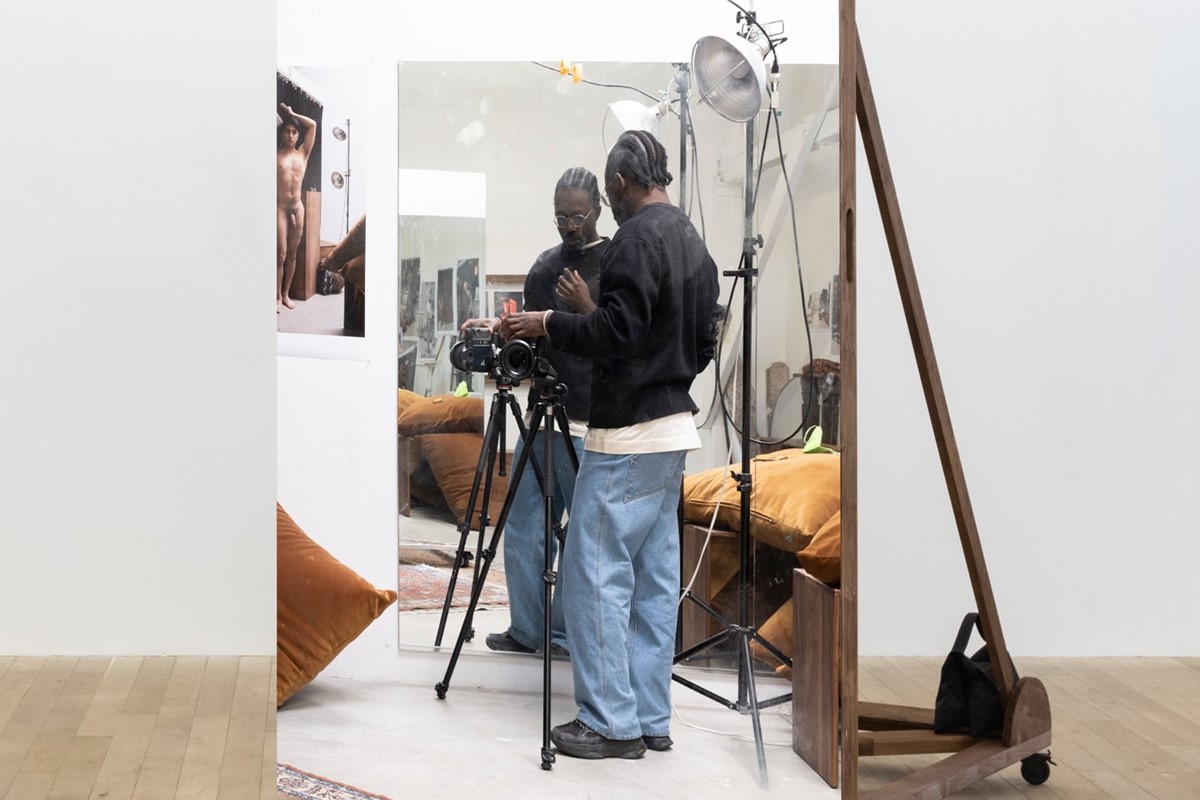
© » ANOTHER
about 20 months ago (02/12/2024)
The Queer Intimacy of Paul Mpagi Sepuya’s Self-Portraits | AnOther January 26, 2024 Text Adam Murray Lead Image Courtesy the artist and Galerie Peter Kilchmann, Zurich, Paris...

© » WHITEHOT
about 20 months ago (02/12/2024)
Nelson Loskamp reflects on years making paintings from horror stills advertise donate post your art opening recent articles cities contact about article index podcast main February 2024 "The Best Art In The World" "The Best Art In The World" February 2024 Nelson Loskamp reflects on years making paintings from horror stills Artwork by Nelson Loskamp...
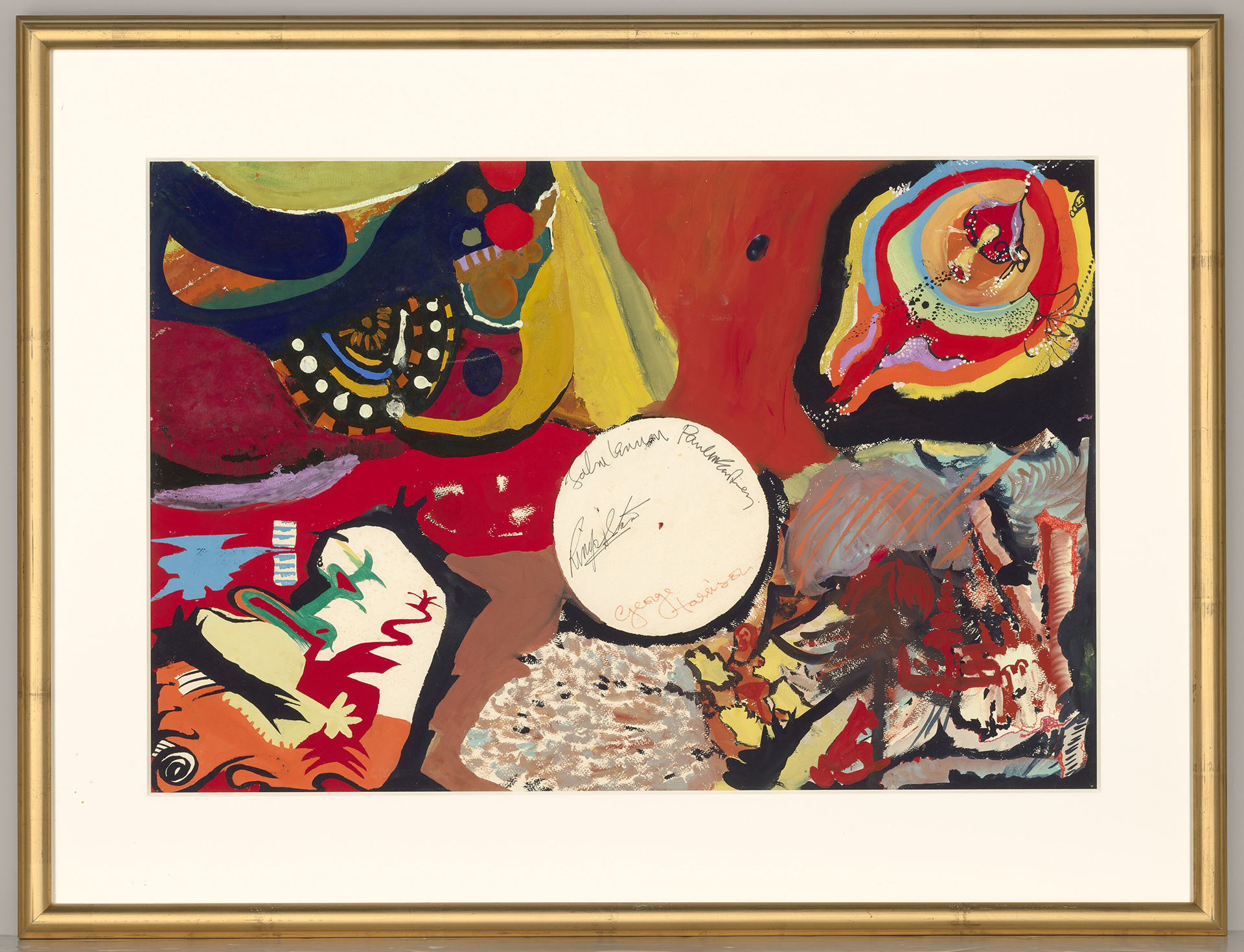
© » GALERIE MAGAZINE
about 20 months ago (02/09/2024)
Auction of the Week: A 1966 Painting Created by The Beatles Sells for $1.7 Million - Galerie Subscribe Art + Culture Interiors Style + Design Emerging Artists Discoveries Artist Guide More Creative Minds Life Imitates Art Real estate Events Video Galerie House of Art and Design Subscribe About Press Advertising Contact Us Follow Galerie Sign up to receive our newsletter Subscribe The Beatles, Images of a Woman, 1966...

© » MODERN MET ART
about 20 months ago (02/06/2024)
Painting Made by All Four Members of the Beatles Sells for $1.7M Home / Art / Painting Painting Made by All Four Members of The Beatles Sells for $1.7 Million at Auction By Regina Sienra on February 6, 2024 Photo: United Press International via Wikimedia Commons (Public domain) Over half a century after their disbandment, The Beatles continues to have devoted fans around the world...

© » HYPERALLERGIC
about 20 months ago (02/05/2024)
John Steuart Curry: Weathering the Storm Skip to content John Steuart Curry, “Tornado Over Kansas” (1929), oil on canvas, (46 1/4 × 60 3/8 inches) “Tornado Over Kansas” (1929) is an iconic image in United States pop culture, but few people know its creator, John Steuart Curry, whose paintings of picturesque landscapes, communal gatherings, and devastating natural disasters have defined the country’s perceptions of the American Midwest since the late 1920s...

© » MODERN MET PHOTOGRAPHY
about 20 months ago (01/31/2024)
Paul McCartney's Photos of the Beatles Come to Brooklyn Museum Home / Photography Paul McCartney’s Photos Documenting The Beatles’ Rise to Stardom Coming to the Brooklyn Museum By Jessica Stewart on January 31, 2024 Paul McCartney...
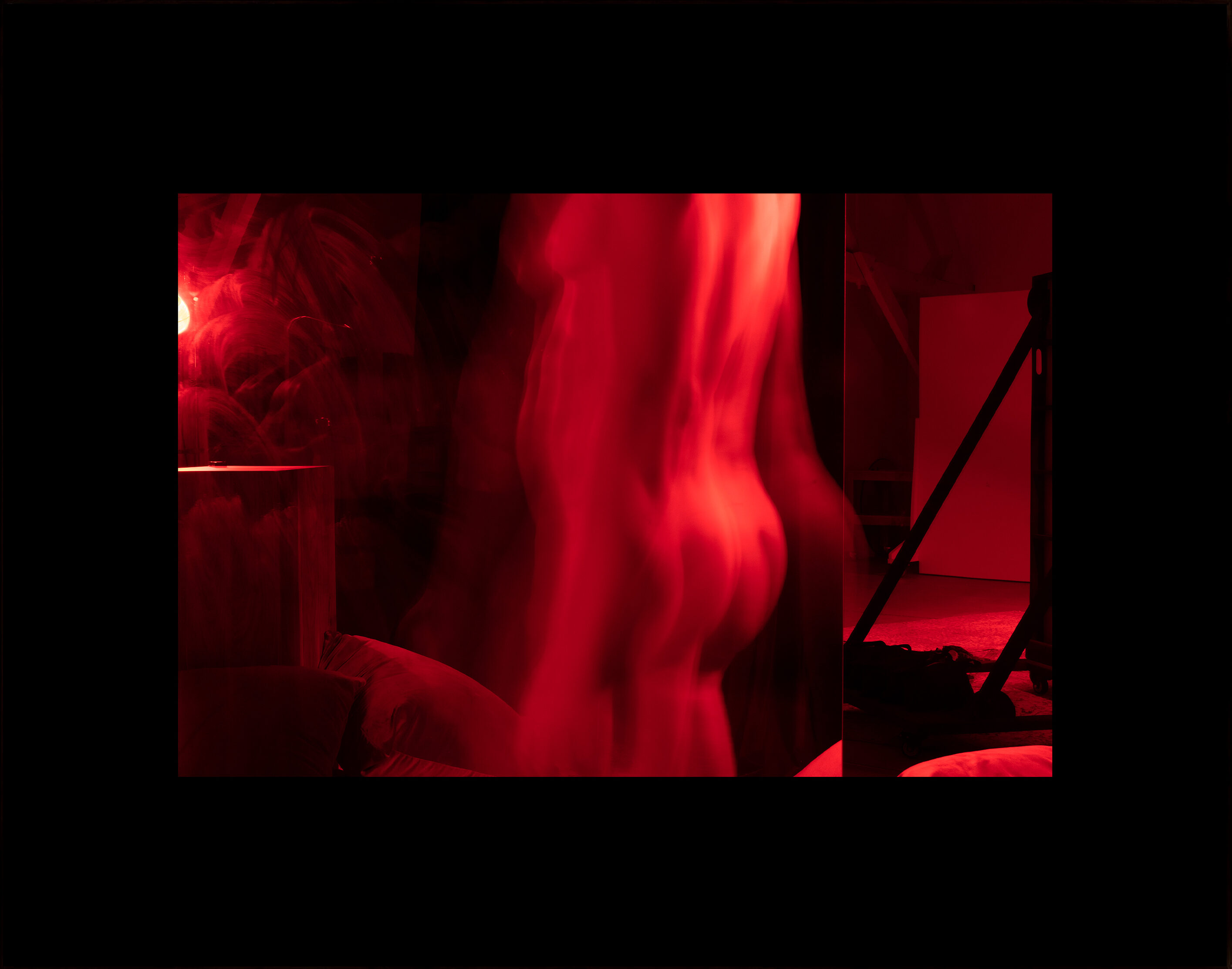
© » 1854 PHOTOGRAPHY
about 21 months ago (01/30/2024)
Meet me in the darkroom: Paul Mpagi Sepuya’s 25 years of Queer reflexivity - 1854 Photography Subscribe latest Agenda Bookshelf Projects Industry Insights magazine Explore ANY ANSWERS FINE ART IN THE STUDIO PARENTHOOD ART & ACTIVISM FOR THE RECORD LANDSCAPE PICTURE THIS CREATIVE BRIEF GENDER & SEXUALITY MIXED MEDIA POWER & EMPOWERMENT DOCUMENTARY HOME & BELONGING ON LOCATION PORTRAITURE DECADE OF CHANGE HUMANITY & TECHNOLOGY OPINION THEN & NOW Explore Stories latest agenda bookshelf projects theme in focus industry insights magazine ANY ANSWERS FINE ART IN THE STUDIO PARENTHOOD ART & ACTIVISM FOR THE RECORD LANDSCAPE PICTURE THIS CREATIVE BRIEF GENDER & SEXUALITY MIXED MEDIA POWER & EMPOWERMENT DOCUMENTARY HOME & BELONGING ON LOCATION PORTRAITURE DECADE OF CHANGE HUMANITY & TECHNOLOGY OPINION THEN & NOW Dark Room Model Study (0X5A1728) , 2021...

© » ARTSY
about 21 months ago (01/24/2024)
Paul McCartney’s photos of Beatlemania will go on show at the Brooklyn Museum...
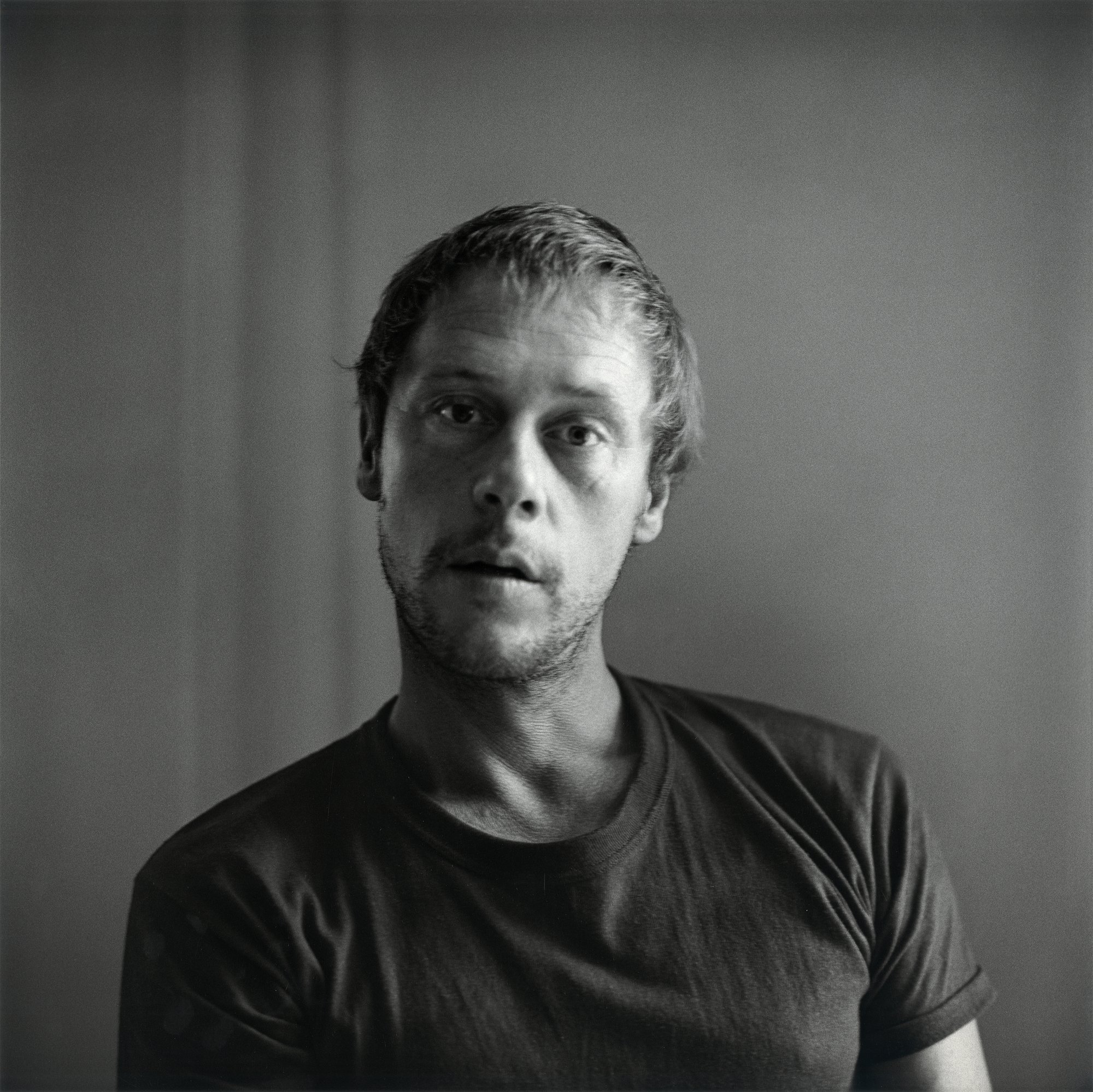
© » FAD MAGAZINE
about 21 months ago (01/24/2024)
Pace now represent the Estate of American artist Paul Thek - FAD Magazine Skip to content By Mark Westall • 24 January 2024 Share — Peter Hujar, Paul Thek (II), 1975 © The Peter Hujar Archives Pace has announced the global representation of the estate of legendary American artist Paul Thek ...

© » ARTSY
about 21 months ago (01/24/2024)
Pace Gallery announces global representation of Paul Thek’s estate...

© » SLASH PARIS
about 21 months ago (01/08/2024)
Seyni Awa Camara — John McAllister — Sculpting Earth, Painting Sensations — Almine Rech Gallery — Exhibition — Slash Paris Login Newsletter Twitter Facebook Seyni Awa Camara — John McAllister — Sculpting Earth, Painting Sensations — Almine Rech Gallery — Exhibition — Slash Paris English Français Home Events Artists Venues Magazine Videos Back Previous Next Seyni Awa Camara — John McAllister — Sculpting Earth, Painting Sensations Exhibition Installation, painting, sculpture Seyni Awa Camara, John McAllister, Sculpting Earth, Painting Sensations, 2023 Galerie Almine Rech — Photographie : DR Seyni Awa Camara — John McAllister Sculpting Earth, Painting Sensations Ends in 13 days: January 11 → February 24, 2024 Almine Rech is pleased to present Sculpting Earth, Painting Sensations, an exhibition that creates a unique dialogue between the artists Seyni Awa Camara and John McAllister...
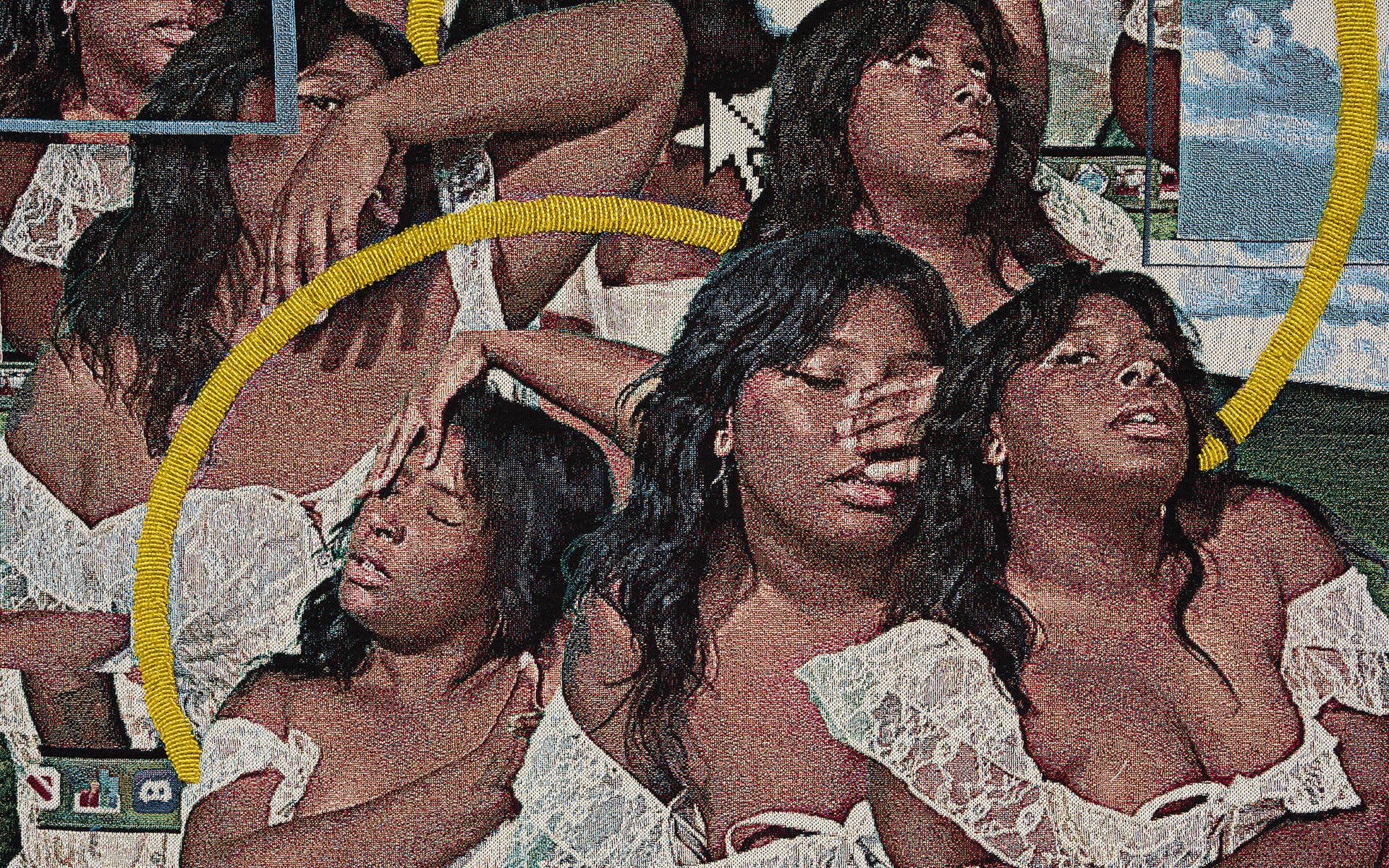
© » GALERIE MAGAZINE
about 22 months ago (12/18/2023)
Fast-Rising Artist Qualeasha Wood Blends Textural Fuzziness with Digital Frenzy - Galerie Subscribe Art + Culture Interiors Style + Design Emerging Artists Discoveries Artist Guide More Creative Minds Life Imitates Art Real estate Events Video Galerie House of Art and Design Subscribe About Press Advertising Contact Us Follow Galerie Sign up to receive our newsletter Subscribe Swag Surfin (2023) by Qualeasha Wood...

© » TWOCOATSOFPAINT
about 22 months ago (12/14/2023)
Coherent divergence at John Molloy Gallery – Two Coats of Paint Carter Hodgkin, Dither 12, cut paper collage with acrylic paint, inkjet & protective varnish on canvas over panel, 24 x 24 inches Contributed by Jonathan Stevenson / “Mutability,” a thoughtfully conceived and curated group show at John Molloy Gallery, by its title contemplates the elastic aesthetic capacities of painting, drawing, and sculpture...

© » THE GUARDIAN
about 23 months ago (11/30/2023)
John Akomfrah: Arcadia review – celebration of Mayflower overwhelms the senses | John Akomfrah | The Guardian Skip to main content Skip to navigation Skip to navigation There is always a man on the shore, his back to us … a still from John Akomfrah’s Arcadia...

© » SLASH PARIS
about 23 months ago (11/29/2023)
Paul Lepetit — Not so Blue — Les Bains-Douches d'Alençon — Exhibition — Slash Paris Login Newsletter Twitter Facebook Paul Lepetit — Not so Blue — Les Bains-Douches d'Alençon — Exhibition — Slash Paris English Français Home Events Artists Venues Magazine Videos Back Paul Lepetit — Not so Blue Exhibition Mixed media Paul Lepetit Courtesy de l’artiste Paul Lepetit Not so Blue Ends in 12 days: November 24 → December 23, 2023 The Skogyrkogarden Cruise: Rambling in the Lands of Sexual Dissidence “Be proud and happy of what your body exults...
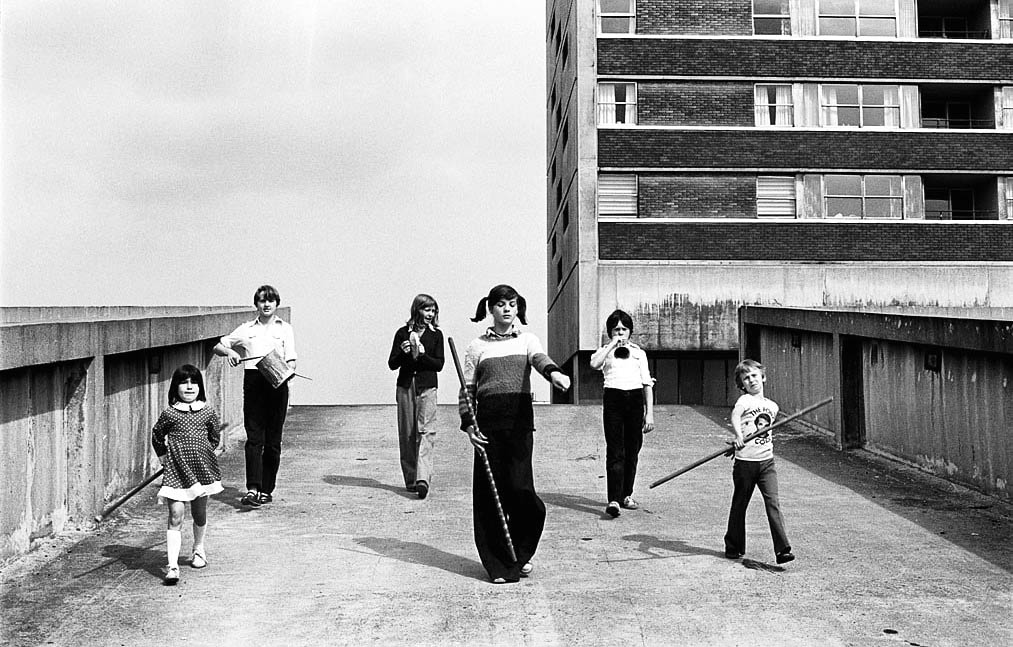
© » 1854 PHOTOGRAPHY
about 23 months ago (11/29/2023)
‘With a documentary, you’re beholden to the truth’: Director Paul Sng on telling Tish's story - 1854 Photography Subscribe latest Agenda Bookshelf Projects Industry Insights magazine Explore ANY ANSWERS FINE ART IN THE STUDIO PARENTHOOD ART & ACTIVISM FOR THE RECORD LANDSCAPE PICTURE THIS CREATIVE BRIEF GENDER & SEXUALITY MIXED MEDIA POWER & EMPOWERMENT DOCUMENTARY HOME & BELONGING ON LOCATION PORTRAITURE DECADE OF CHANGE HUMANITY & TECHNOLOGY OPINION THEN & NOW Explore Stories latest agenda bookshelf projects theme in focus industry insights magazine ANY ANSWERS FINE ART IN THE STUDIO PARENTHOOD ART & ACTIVISM FOR THE RECORD LANDSCAPE PICTURE THIS CREATIVE BRIEF GENDER & SEXUALITY MIXED MEDIA POWER & EMPOWERMENT DOCUMENTARY HOME & BELONGING ON LOCATION PORTRAITURE DECADE OF CHANGE HUMANITY & TECHNOLOGY OPINION THEN & NOW Tish Murtha, Kenilworth Road Kids, Cruddas Park, Juvenile Jazz Bands , 1979 © Ella Murtha This article appears in the forthcoming Portrait issue of British Journal of Photography...

© » FLASH ART
about 23 months ago (11/13/2023)
Issy Wood "I Like to Watch" Ilmin Museum of Art / Seoul | | Flash Art Flash Art uses cookies strictly necessary for the proper functioning of the website, for its legitimate interest to enhance your online experience and to enable or facilitate communication by electronic means...

© » BOMB
about 25 months ago (09/15/2023)
BOMB Magazine | John Cotter Interviewed Necessary (Required) Cookies that the site cannot function properly without...

© » LARRY'S LIST
about 37 months ago (10/05/2022)
The designer talks about his personal collection and how he’s been supporting low-income young artists through the years....

© » LARRY'S LIST
about 37 months ago (10/05/2022)
He purchased and expanded Babcock Galleries, New York’s oldest art seller, while building a renowned pottery collection...
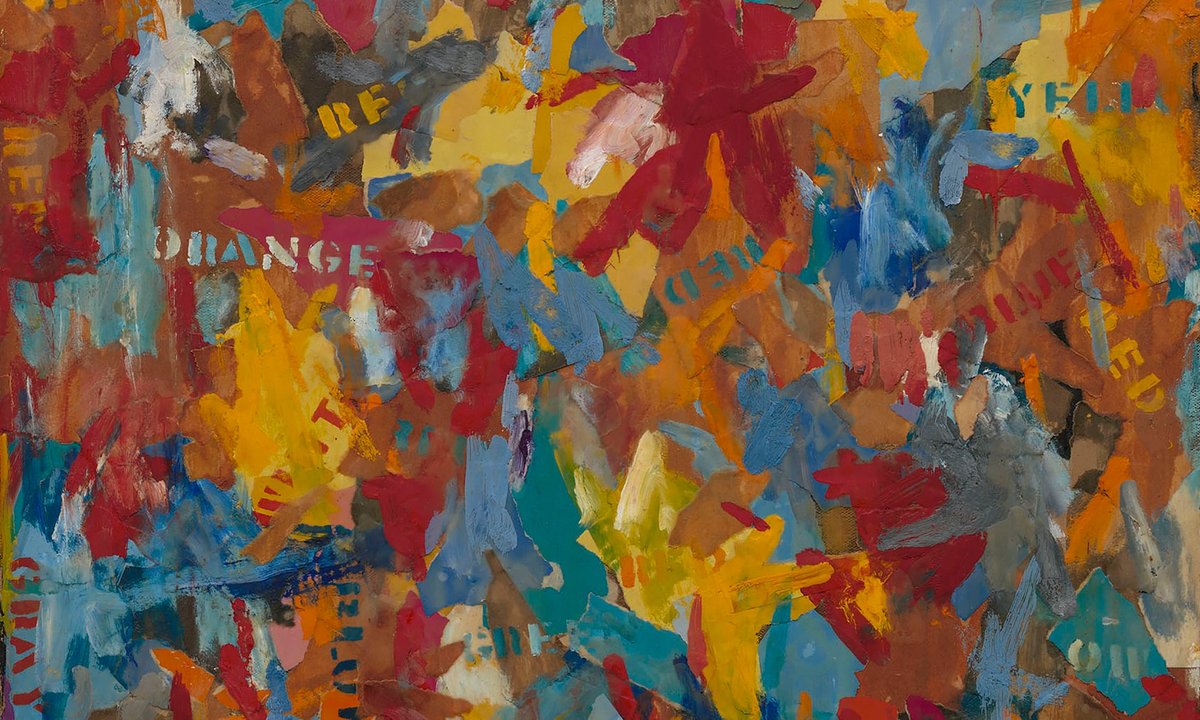
© » LARRY'S LIST
about 37 months ago (10/05/2022)
Microsoft Mogul Paul Allenâs Art Collection Heads to Christieâs and Could Be First to Hit $1bn - via The Art Newspaper...
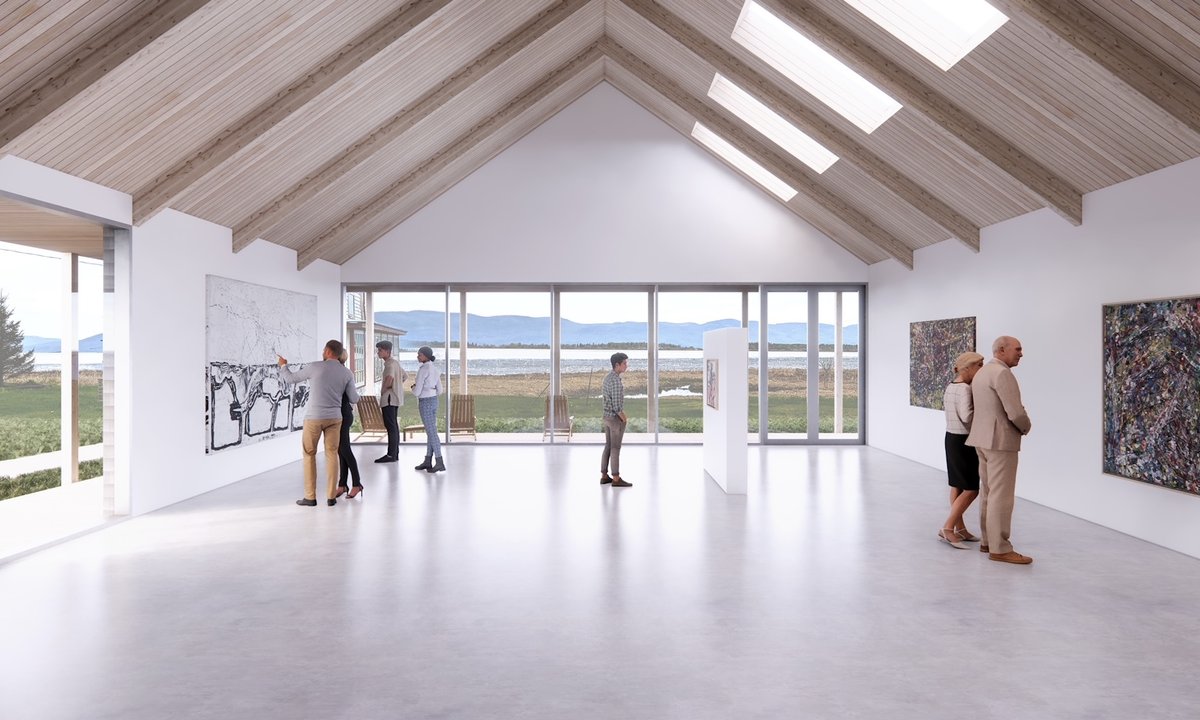
© » LARRY'S LIST
about 37 months ago (10/05/2022)
The museum, proposed by the artist’s widow, would cost $3.3m and is to be situated on scenic island in the St...
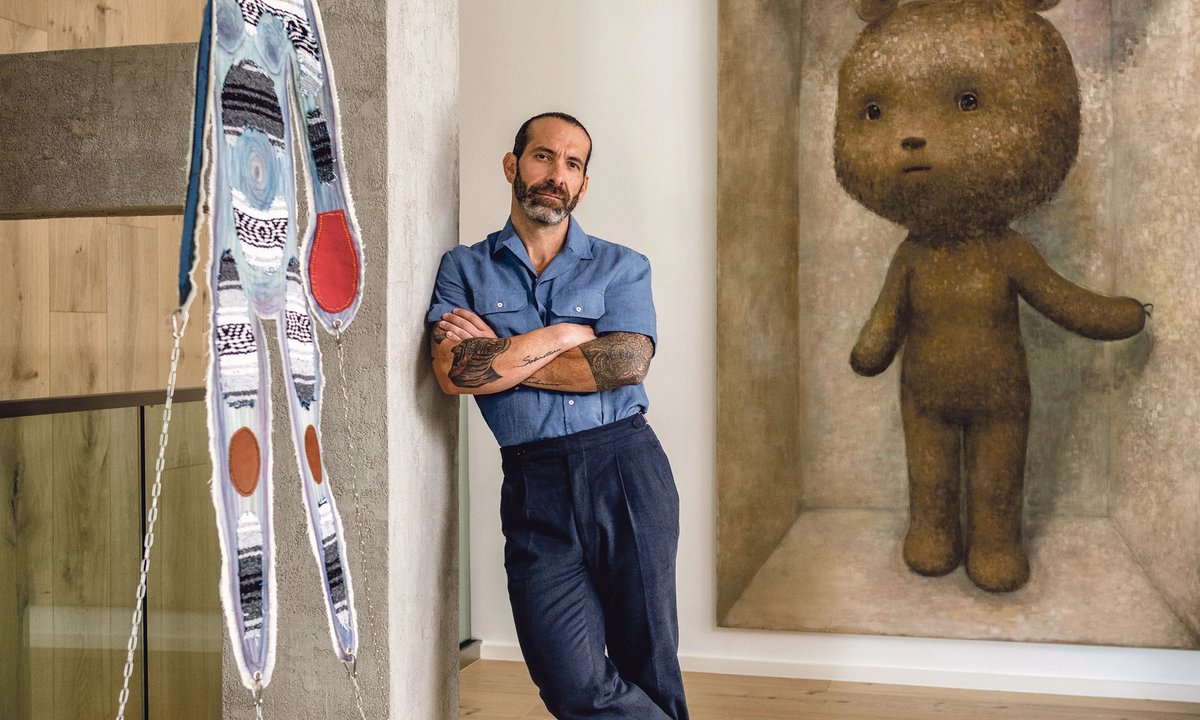
© » LARRY'S LIST
about 37 months ago (10/05/2022)
Collector's Eye: John Marquez - via The Art Newspaper...

© » LARRY'S LIST
about 37 months ago (10/05/2022)
City-proud cultural polymath John Waters has bequeathed 375 artworks and objects from his fine-art collection to the Baltimore Museum of Art (BMA), the institution announced yesterday...

© » ARTS EQUATOR
about 56 months ago (03/12/2021)
Brown Is Haram: Kristian-Marc James Paul and Mysara Aljaru reclaim their space | ArtsEquator Thinking and Talking about Arts and Culture in Southeast Asia ArtsEquator Viewpoints Courtesy of the artists March 12, 2021 Brown Is Haram: Reconstructing The Brown Narrative is a performance-lecture exploring different aspects of the experience of being brown in Singapore, exploring issues such as social mobility and masculinity...

© » HIGH FRUCTOSE
about 70 months ago (01/17/2020)
In John Jacobsmeyer’s parallel reality, pop culture and art history collide with the backdrops of his suburban youth...

© » HIGH FRUCTOSE
about 71 months ago (12/11/2019)
The paintings of Jean Paul Langlois blend memories of 1970s sci-fi and Westerns of his youth, while also exploring the artist’s connection to his own native and non-native roots...
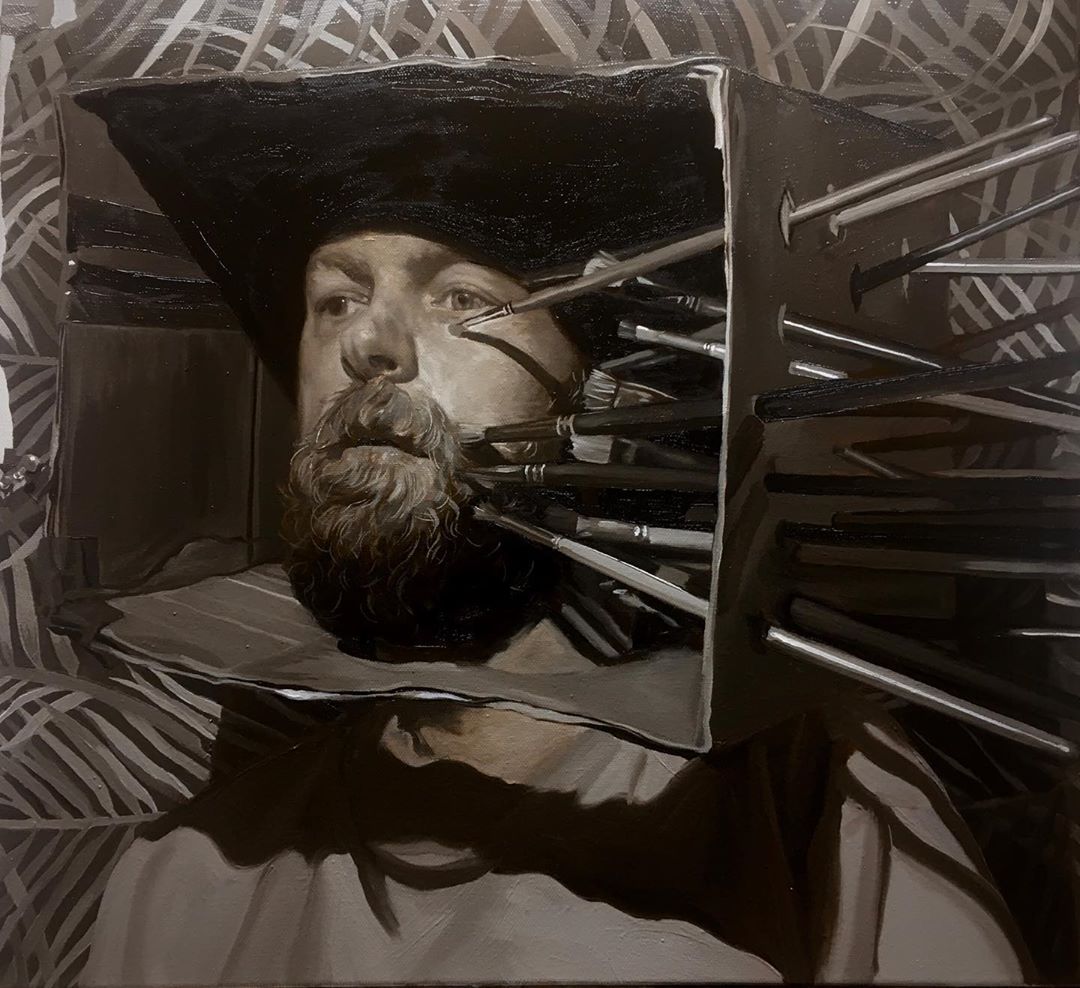
© » HIGH FRUCTOSE
about 71 months ago (11/30/2019)
Oil painter and performance artist John Robinson crafts cerebral, wistful, and, at times, humorous self-portraits...
-
1940-1949
John Gutmann
1947Gutmann’s photographs Untitled Nob Hill and From the North Tower of the Golden Gate Bridge are some of the oldest pieces in the Kadist Collection and serve as historical anchors for many of the more recent works...
-
1970-1979
Larry Bell
Drawing & Print
1979(Drawing & Print) Like many of Larry Bell’s works, VFGY9 deals primarily with the viewer’s experience of sight...
-
1980-1989
Paul McCarthy
1983McCarthy’s Mother Pig performance at Shushi Gallery in 1983 was the first time he used a set, a practice which came to characterize his later works...
-
1990-1999
John Baldessari
Drawing & Print
1991(Drawing & Print) The voids in Baldessari’s painted photographs are simultaneously positive and negative spaces, both additive and subtractive...
John Wood and Paul Harrison
1996One of John Wood and Paul Harrison’s earliest works, Device features Harrison performing a series of actions, assisted by the titular ‘devices’, that use physics to force his body into unusual and uncomfortable positions...
John Wood and Paul Harrison
19973-Legged is an early video work by John Wood and Paul Harrison in which they appear with their legs tied together (as one would do in a three-legged race)...
John Baldessari
1997In One Must , an image of a pair of scissors, accompanied by the words of work’s title, poses an ominous question about the relationship between the image and the text...
-
2000-2009
John Isaacs
2004A child and dreamer my whole life long (broken tree) (2004) is a sculpture made of filler, wire, copper, oil paint, and wood depicting a tree just at it’s moment of breaking into half – one part alive with foliage and blooming branches and the other the crisp of the break exposed, with the trunk adhered solidly to a plinth...
Saâdane Afif
2005In this work, Saâdane Afif quotes André Cadere’s round wooden batons using the copy share and remix principles...
Mario Garcia Torres
2005Mario Garcia Torres films a game of Charades among professional actors guessing the former North Korean dictator’s favorite Hollywood films...
John Menick
2006The theme of the end of the world, of the last man on earth, recurs in our literary and cinematographic culture and in our imaginary: “we had this dream before, the dream that we’re alone.” In The Secret Life of Things , the narrator presents himself as an enthusiast and expert on films announcing the end of the world and those staging someone waking up to discover that they are the only survivor on earth...
Felix Gmelin
2006In Untitled (after Paul Schultze Nuremberg’s Kunst) (2006), from a larger series of diptychs, Gmelin addresses the notion of entartete kunst ( “Degenerate Art”) ...
Joachim Koester
2006Physical and mental exploration have been founding elements in Joachim Koester’s research for several years...
Paul McCarthy
2008Memory Mistake of the Eldridge Cleaver Pants was created for the show Paul McCarthy’s Low Life Slow Life Part 1 , held at California College of the Arts’s Wattis Institute in 2008 and curated by McCarthy himself...
J. John Priola
2008Priola pays particular attention to otherwise unnoticed details in the cityscape, a quality that not only recurs throughout his oeuvre, but which also places his work in line with a strong tradition of California documentary photography...
Thomas Kilpper
Drawing & Print
2009(Drawing & Print) These two images come from the series called “State of Control” which Kilpper made in the building formerly occupied by the Stasi in Berlin...
Thomas Kilpper
Drawing & Print
2009(Drawing & Print) These two images come from the series called “State of Control” which Kilpper made in the building formerly occupied by the Stasi in Berlin...
Yang Xinguang
2009Although seemingly unadorned at first glance, Yang Xinguang’s sculptural work Phenomena (2009) employs minimalist aesthetics as a means of gesturing towards the various commonalities and conflicts between civilization and the natural world...
-
2010-2019
Paul McCarthy
Drawing & Print
2010(Drawing & Print) To make Mickey Mouse (2010), Paul McCarthy altered a found photograph—not of the iconic cartoon, but of a man costumed as Mickey...
Hamra Abbas
2010At first glance, Cityscapes (2010) seems to be a collection of panoramic photographs of the city of Istanbul—the kind that are found on postcards in souvenir shops...
Alicia McCarthy
Drawing & Print
2010(Drawing & Print) A painting reminiscent of a certain “naive primitivism,” Untitled (Colors) and Untitled (Ghost) are representative of McCarthy’s work...
Christopher Badger
2011Drowned Wood Standing Coiled (2011) consists of two sculptures, inextricably linked...
John Houck
2013John Houck’s multi-layered photographic compositions immortalize nostalgic objects from the artist’s childhood, manipulated in the studio and in post-production into unreal still-life arrangements...
John Houck
2013John Houck’s brown- , sienna- and golden-toned composition, Untitled #185, 65, 535 combinations of a 2×2 grid, 16 colors , features densely packed lines of color moving diagonally across the creased page...
John Houck
2013Baby Shoes, Never Worn is part of photographer John Houck’s series of restrained still-life photographs capturing objects from his childhood...
John Houck
2013Houck’s Peg and John was made as part of a series of photographic works that capture objects from the artist’s childhood...
John Houck
2013Untitled #242 is part of Houck’s Aggregates Series, which uses digital tools to manipulate chosen sets and pairs of colors, creating colorful index sheets, bathed in colors and lines...
Chris Huen Sin-Kan
2013Contrast to the bustling and unrelenting experience of a city such as Hong Kong, Chris Huen Sin Kan paints the tranquil interiors of his apartment, where he leads a modest and almost hermit-like life...
Paul Czerlitzki
2014In this painting made in 2014, which is part of a series started in 2013, the artist dismantles the traditional painting process...
Lucia Madriz
2014In her geometric paintings on wood panel, Madriz employs the Fibonacci numbers to illustrate, in simplified form, the pattern of natural plant growth—beginning from a single stem, and growing exponentially, rationally, and efficiently outward from there...
Matthew Angelo Harrison
2015In Hole #1 a zebra scull stands in as a representation of Africa, while the plexiglass box and the hole made through it represent the inaccessibility of that culture to African-Americans....
Erika Verzutti
2015Made in cast bronze, Two Eyes Two Mouths provokes a strong sense of fleshiness as if manipulated by the hand of the artist pushing her fingers into wet clay or plaster to create gouges that represent eyes, mouths and the female reproductive organ...
Matthew Angelo Harrison
2016In Bodily Study of Unthinking Groups, Harrison combines two disparate materials into one stratified stack: automotive clay (used in detailing cars) forms the earthy base, while fragments of zebra skull become imbedded in this falsified soil...
John Gerrard
2016Flag (Thames) 2016 depicts a small section of the Thames River—one that is adjacent to the Palace of Westminster in London—as an algorithmic representation on an LED panel...
Renata Lucas
2016Lucas’s quadroquadro (círculo) employs familiar materials for the artist: wood, paper, and glass...
John Lucas and Claudia Rankine
Drawing & Print
2018(Drawing & Print) Historically, blondeness has been a signifier for desirability and beauty, speaking to “purity” — the purity of whiteness — like no other bodily attribute except, perhaps, blue eyes...



















